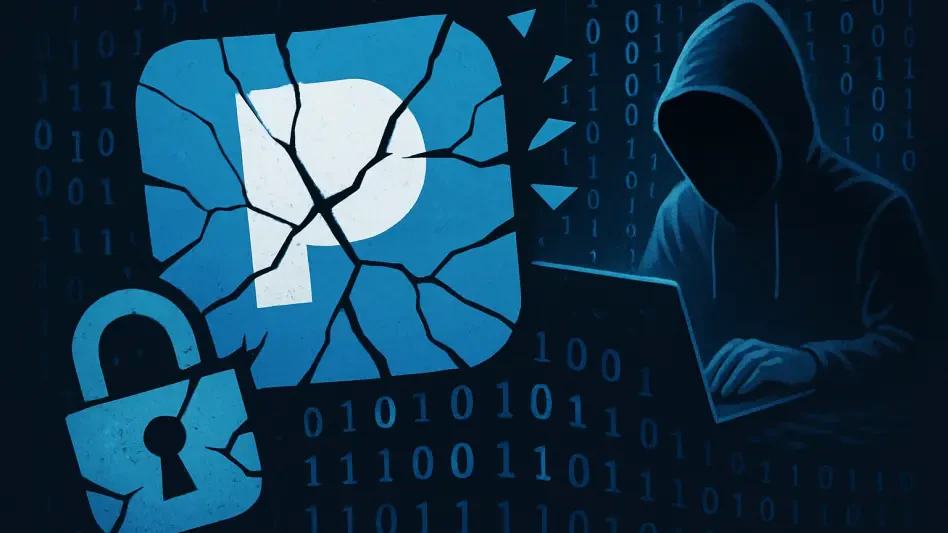In an era where digital connectivity binds businesses and customers closer than ever, the recent cybersecurity incident involving Pandora, a globally recognized Danish jewelry brand, serves as a stark reminder of the vulnerabilities lurking within interconnected systems. A breach orchestrated through a third-party vendor has exposed the personally identifiable information of numerous customers, raising alarms about the security of supply chain partnerships. This event not only impacts those directly affected but also casts a spotlight on the broader challenges companies face in safeguarding data across extended digital ecosystems. As cybercriminals grow more sophisticated, exploiting trusted relationships to bypass primary defenses, the incident underscores an urgent need for robust protective measures. The details of this breach, the response from Pandora, and the wider implications for the industry paint a complex picture of the evolving threat landscape that demands attention and action from all stakeholders in the digital realm.
Unveiling the Breach Details
Understanding the Attack Vector
The breach targeting Pandora did not originate within the company’s own infrastructure but rather through a third-party vendor, a common yet often overlooked vulnerability in modern business networks. Cybercriminals leveraged this trusted relationship to gain unauthorized access to customer data, including names, email addresses, and phone numbers. Fortunately, no sensitive information such as passwords or payment details was compromised, which limits the immediate risk of financial fraud or identity theft. This type of supply chain attack aligns with recognized cybersecurity tactics, where attackers exploit weaker links in a company’s extended network to infiltrate larger organizations. The incident highlights how even well-protected entities can fall victim to threats stemming from external partners, emphasizing the critical need for comprehensive oversight of all connected systems. As these attacks become more prevalent, businesses must reevaluate how they assess and manage risks associated with their vendors and service providers to prevent similar breaches.
Scope and Impact on Customers
While the breach did not expose highly sensitive data, the compromised information still poses significant risks, particularly in the form of targeted phishing attempts and social engineering scams. Affected customers, initially identified in regions like Italy, now face the possibility of receiving fraudulent communications designed to exploit the leaked contact details. Pandora has taken proactive steps to notify those impacted, urging vigilance against suspicious emails or calls that could trick individuals into revealing more personal information. The absence of evidence suggesting data exfiltration or public distribution offers some reassurance, yet the potential for misuse remains a concern. This situation serves as a reminder of the cascading effects a breach can have, even when the data exposed seems limited in scope. It also underscores the importance of customer education on cybersecurity risks, as individuals play a vital role in protecting themselves from secondary attacks that capitalize on such incidents.
Response and Future Safeguards
Immediate Actions Taken by Pandora
In the wake of the breach, Pandora demonstrated a swift and structured response to contain the threat and minimize further damage. The company’s incident response team quickly implemented network segmentation and tightened access controls to prevent unauthorized lateral movement within their systems. Enhancements to Security Information and Event Management (SIEM) systems, alongside the deployment of Endpoint Detection and Response (EDR) solutions, fortified their defenses against ongoing threats. A forensic analysis, supported by digital forensics tools, was initiated to determine the full extent of the compromise, while threat hunting efforts found no indication of data being publicly shared or misused. Starting with affected customers in Italy, notifications were issued to alert individuals of the breach and provide guidance on recognizing potential spear-phishing attempts. These measures reflect a commitment to transparency and security, aiming to restore trust and mitigate immediate risks following the incident.
Strengthening Supply Chain Security
Looking beyond immediate containment, the breach exposed the urgent need for stronger safeguards in managing third-party relationships, a vulnerability increasingly exploited by cybercriminals. Adopting a zero-trust architecture, which assumes no entity is inherently trustworthy and requires continuous verification, could significantly reduce risks associated with vendor access. Continuous monitoring of all network touchpoints, paired with regular security assessments of partners, is essential to identify and address weaknesses before they are exploited. Pandora’s experience serves as a case study for other organizations, highlighting the importance of integrating robust cybersecurity frameworks across their supply chains. By prioritizing proactive measures and fostering a culture of vigilance, companies can better protect their data and customers from threats that originate outside their direct control. This incident reinforces that securing an extended digital ecosystem is as critical as safeguarding internal systems in today’s interconnected business environment.
Lessons for the Industry
Rising Threat of Supply Chain Attacks
The incident at Pandora reflects a growing trend in cybersecurity where supply chain attacks are becoming a preferred method for threat actors seeking to infiltrate well-protected organizations. By targeting less-secure partners or vendors, attackers can bypass traditional defenses and gain access to sensitive data through trusted connections. This tactic has been observed in various high-profile breaches, pointing to a systemic challenge within industries reliant on extensive digital networks. The potential connection to broader Advanced Persistent Threat (APT) campaigns, though not confirmed in this case, adds another layer of complexity to the threat landscape. Companies must recognize that their security posture is only as strong as the weakest link in their supply chain, necessitating a shift toward more collaborative and rigorous vendor risk management practices. Addressing this trend requires a collective effort to elevate security standards across all interconnected entities, ensuring that vulnerabilities at any point do not compromise the entire network.
Building a Resilient Digital Ecosystem
Reflecting on this breach, it becomes evident that fostering resilience in a digital ecosystem demands more than just reactive measures; it calls for a strategic overhaul of how organizations approach cybersecurity. Implementing comprehensive training programs for employees and partners on recognizing phishing attempts and other social engineering tactics proves vital in reducing human error as an entry point for attacks. Additionally, investing in advanced threat detection technologies and sharing threat intelligence with industry peers helps create a united front against evolving risks. Pandora’s response sets a precedent for transparency and accountability, showing that swift action and clear communication with affected parties are essential in managing the fallout. As cyber threats continue to adapt, the lessons learned from this event emphasize the importance of anticipating risks in vendor relationships and embedding security into every facet of business operations. This incident reminds the industry that proactive collaboration and innovation in security practices are key to staying ahead of malicious actors.








